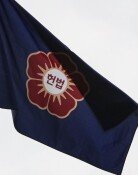Rebellious spirit
Rebellious spirit
Posted March. 05, 2020 08:24,
Updated March. 05, 2020 08:24

“Problematic” artists are found throughout history – those who spark controversy with works of art that challenge conventional wisdom. The mannerist painter El Greco is a case in point. Despite being religious art, many of his paintings unnerved the church and Christians.
Born in Greece, the 16th-century artist enjoyed his heyday after settling in Toledo, Spain at the age of 36. He produced almost 400 religious paintings and portraits. Characterized by strong colors, distorted bodies and an unusual interpretation of the subjects, his works often came as a shock to many people. This particular painting, which was commissioned and rejected by Philip II of Spain, depicts the martyrdom of Saint Maurice. He was a soldier of the Roman army who was executed for refusing to follow a pagan religious practice. Standing in the middle of the soldiers on the right corner is Saint Maurice, who is talking to fellow soldiers in a tunic and a green cape. The execution, which is the most dramatic scene where he gets killed naked, is portrayed on the left corner. But the man praying on his knees behind the dead body and the soldier looking at him are all Saint Maurice. The painting illustrates four different points in time, and the same person appears four times in one scene, which made it confusing and pagan. In the era of the Counter-Reformation, painters were encouraged to draw paintings that could instill strong faith in God and artworks were strictly censored and controlled. Instead of evoking admiration and empathy for the saint, it discouraged people from praying, hence rebellious. The rejection by the king was expected.
Ironically, El Greco, who was considered to be a crazy artist, hugely influenced the 20th century art. “Opening of the Fifth Seal” that was drawn in the last years of his life was an inspiration for Pablo Picasso’s “Les Demoiselles d'Avignon.” The famous artwork of the 20th century was actually inspired by a 16th century religious painting.
tjdrud0306@donga.com
Headline News
- Med professors announce intention to leave hospitals starting Thursday
- Bridge honoring Sgt. Moon Jae-sik unveiled in Pennsylvania
- Chief of Staff Chung tells presidential secretaries to stay away from politics
- US FTC bans noncompete agreements
- N. Korea launches cyberattacks on S. Korea's defense companies







